Namibia is one of my favorite countries in this world. I’ve visited five times now in several different seasons – March (rainy season), July (winter), and September, October, and November when it’s hot and dry.
Like any desert, Namibia experiences great swings in temperature from day to night, and when it comes to sand, footwear can make all the difference.
Here’s everything to plan for at each of Namibia’s major destinations:
Namibia Essentials:
Great places to find clothes for the trip: ThredUp, Poshmark, or rent them!
- Sweatshirt and Sweatpants.
- Beanie, gloves, and light puffer (if May – July).
- 3-4 sets of T-shirts and shorts.
- 1-2 leggings.
- 1-2 dresses for tea and Sossusvlei (optional).
- 2-3 sets of neutral clothes for safari.
- Enough underwear and socks for a week (can do laundry in Swakopmund and Windhoek).
- 1-2 bathing suits, as almost every lodge has a pool.
- 1 Pair Chacos or similar.
- 1 Pair closed-toed ankle boots with tread (Doc Martens or similar).
- 1+ wide brim hat.
- Binoculars (our group liked this brand) and/or camera with zoom lens.
- Rechargeable power bank.
- Power adapter M (this one covers almost any outlet you’ll find in Africa).
- Refillable water bottle.
- Optional: Older phone or hot spot for Namibia SIM card, as eSIMs don’t work well there.
Luggage: It’s easiest to travel with a backpack with straps here, as the gravel ground can be tough for wheeled luggage and duffels are less comfortable than backpacks. Consider an Air tag for your luggage (can be useful anywhere in the world).
Connectivity: If you want a SIM card, it’s best to buy physical SIMs in Namibia, which has poor eSIM coverage. You can get one at the airport when you land (bring an older phone or hot spot that takes physical SIMs). Generally these work better than WiFi for those who need to be connected, though some areas are so remote that neither WiFi nor cell signal will work.
Toiletries: Hand wipes, hand sanitizer, thick lotion and lip balm, sunscreen, mosquito repellant, your own hair conditioner (many hotels lack conditioner but provide shampoo and body wash), and a small container of hand soap for gas station restrooms can be handy.
Travel Insurance: The bad news is, most credit card-provided insurance has super limited coverage – I found this out the hard way. The good news is, there are policies out there that can specifically cover your needs. I’d seriously consider a policy with at least $100k in coverage, including $10k in trip cancellation benefits, and emergency medical evacuation. While it’s always important to read the fine print, we’ve tested the following:
Faye (read our review)
Safetywing (read our review)
World Nomads (read our review)
Windhoek
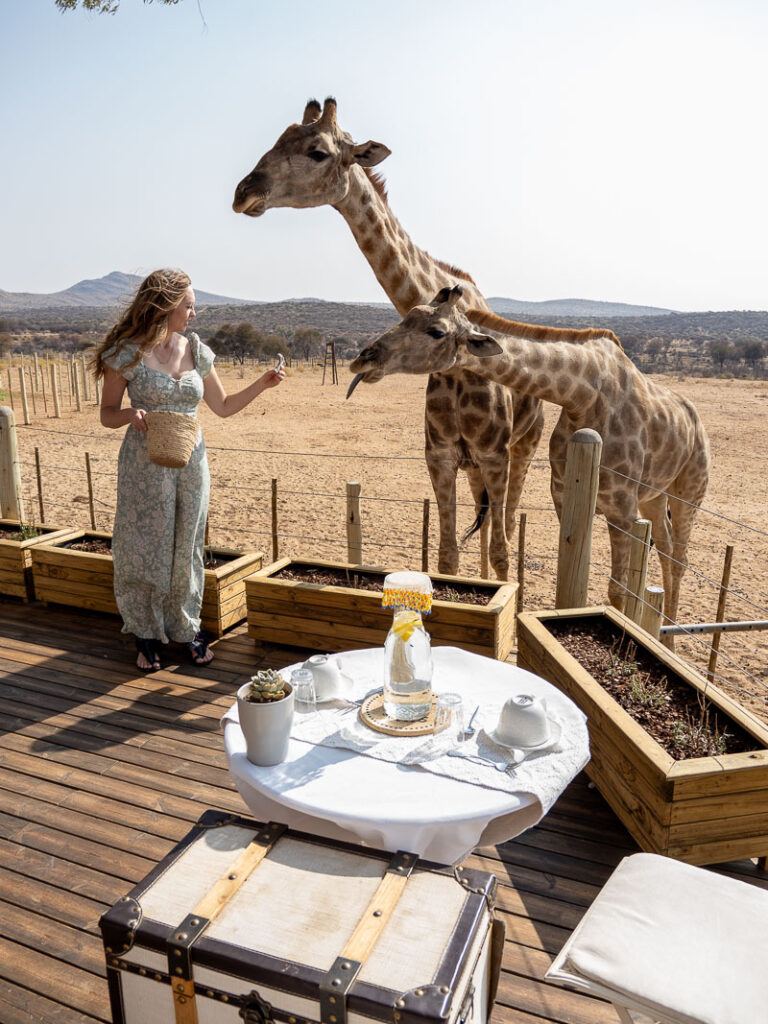
Windhoek is most visitors’ entry point to Namibia, and since it’s at about 5400 feet in elevation, it can feel cooler than much of the rest of Namibia. Plan on chilly mornings and warm temperatures during the day regardless of time of year.
On our women’s Africa trip (which this post closely follows), we stop by Na’ankuse Lodge and do high tea with giraffes.
Afternoon game drives can be warm. A wide-brimmed hat, sunscreen, closed-toed shoes, and neutral colors are best for these. On the Naankuse carnivore feeding, you’ll be getting in and out of the truck into dirt, so sun protection and closed shoes are a good idea.
Morning game drives like the meerkat sunrise are best in layers, when the weather can be chilly. I often just wear sweat pants and a sweatshirt, and may use a lap blanket, gloves, and beanie if it’s May – July.
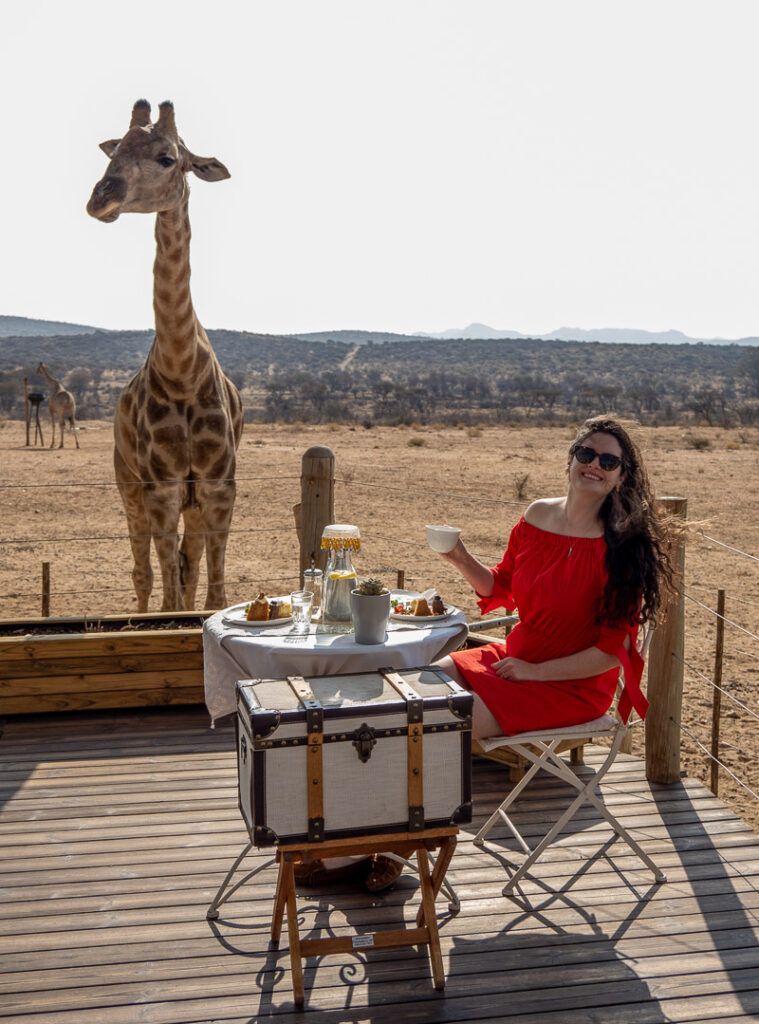
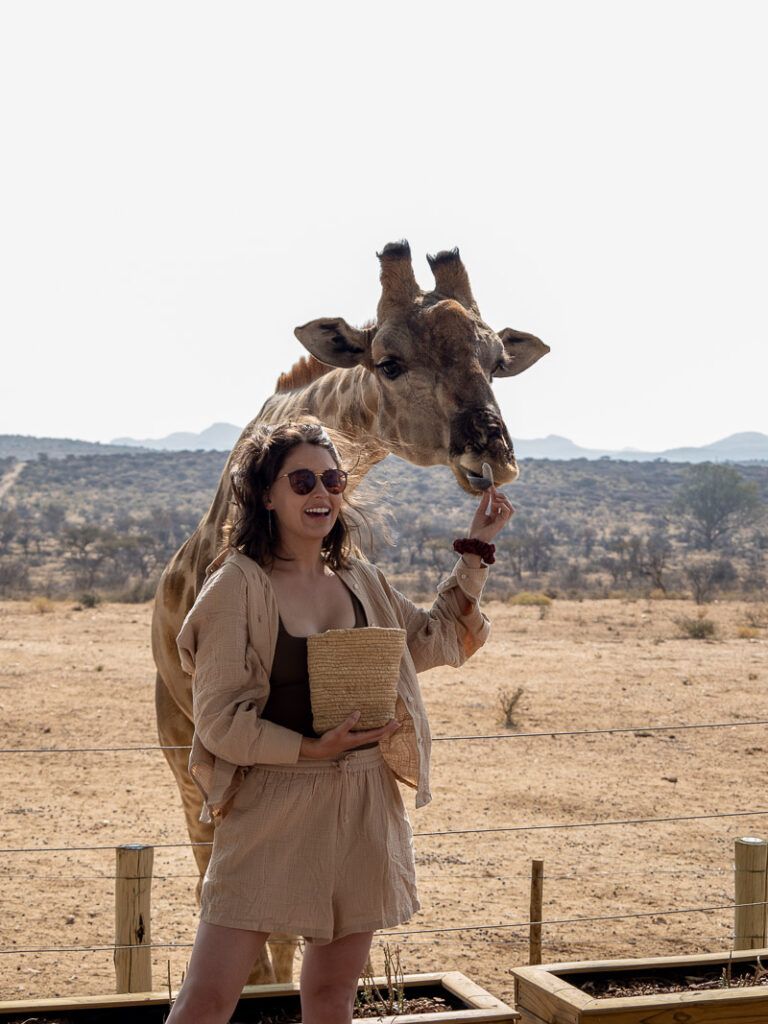
For the giraffes, high tea is the time to dress up! I love a light-hued romper or dress for this (mine is from Free People, but I bought it on Thredup!), as it blends in perfectly with the scenery. A bold color like red can be amazing, too! Bring your hat, sunnies, and sunscreen as the tea usually takes place around 3pm.
Other things to know:
- Though never a guarantee, this will likely be the best WiFi of the trip.
- If your luggage is delayed, Windhoek mall is a good place to shop.
Etosha National Park
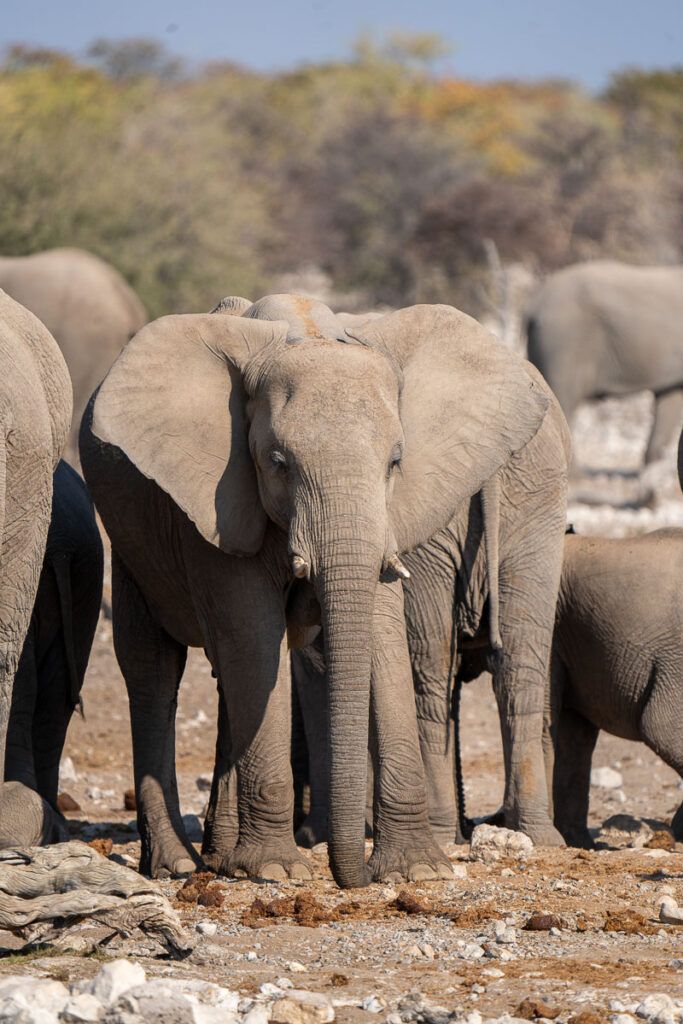
Etosha is a dry, dusty part of Namibia, and most of the time, you’ll be in a vehicle as you enjoy it.
Footwear and style is less important here, but comfort is key. Most game drives take place throughout the day, when it can get boiling hot. I like layers in the morning with shorts underneath for the afternoon, as is often my Namibia uniform.
It’s also important to stay in neutral colors on game drives, as bright colors can distract the animals, and nobody wants that!
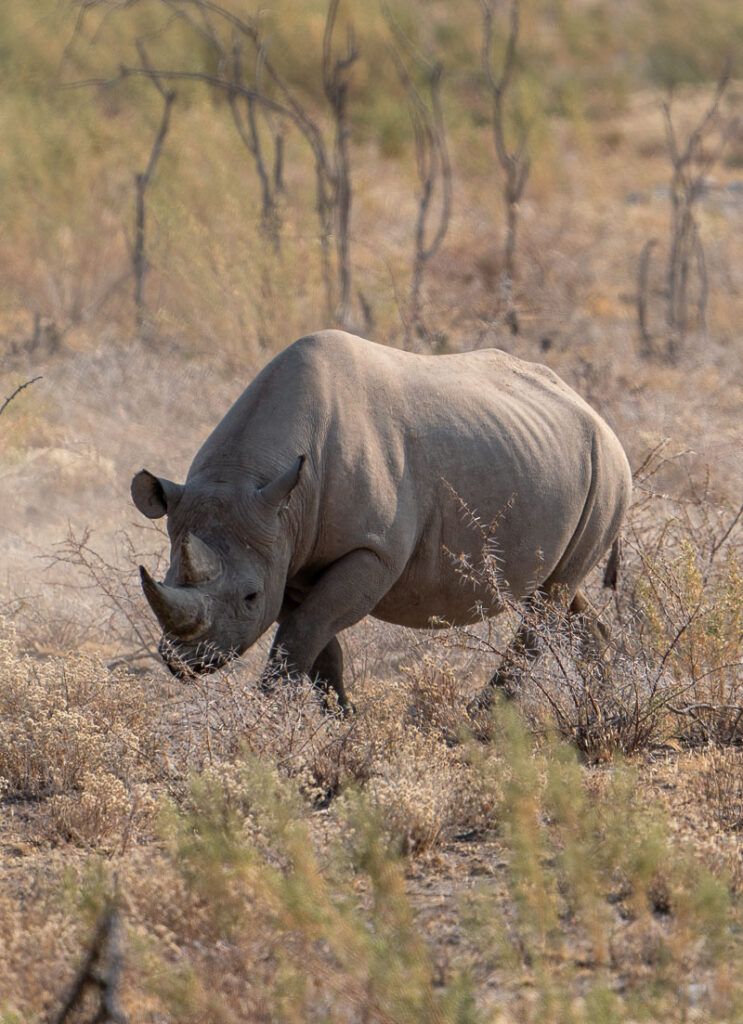
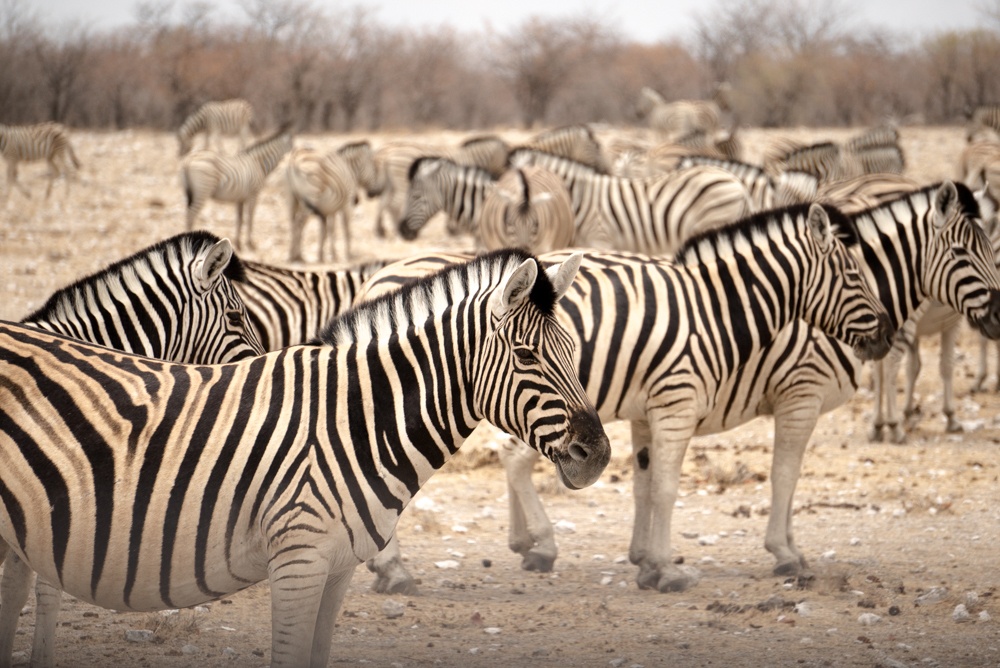
This is a good time to have cameras fully charged and binoculars ready to go.
Other things to know:
- Etosha is in a remote area, which is great for wildlife viewing, but not always great for a strong WiFi connection.
- Make sure you have plenty of water along, but know that bathroom breaks will be infrequent (and bush pees are a no-no in wildlife areas for safety reasons).
- It’s mostly a gravel road which can be quite dusty and bumpy.
Spitzkoppe
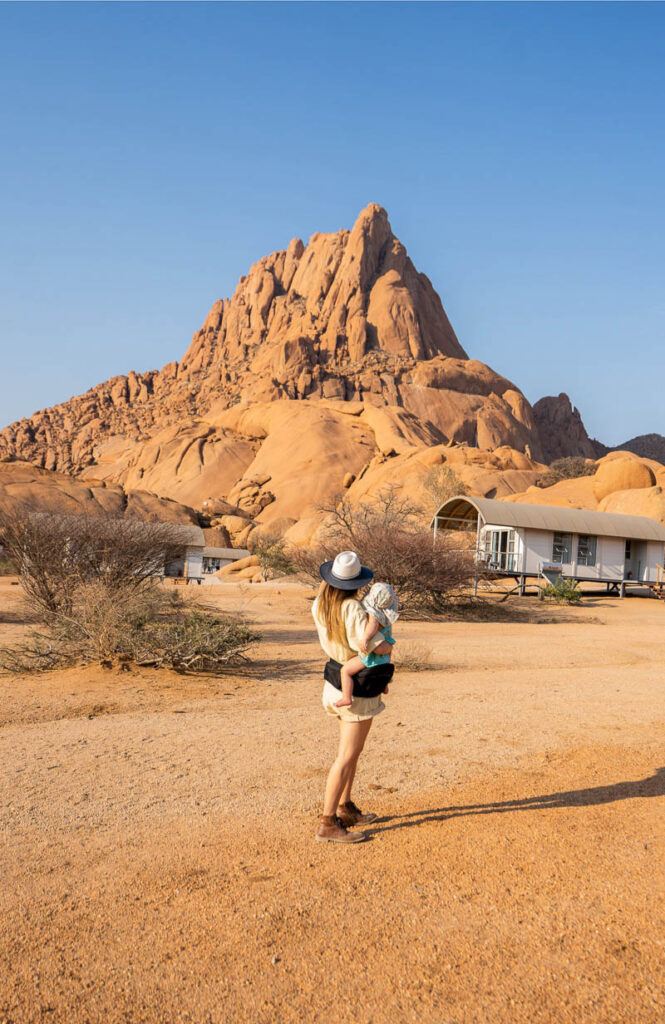
A collection of dramatic granite rocks, rock arches, and ancient cave drawings in the middle of the country, Spitzkoppe is worth a stop!
It can also be quite hot, averaging 90+ degrees F during the warmer months. Bring a sun hat, sunscreen, and closed-toed shoes with some tread to walk on the rocks with.
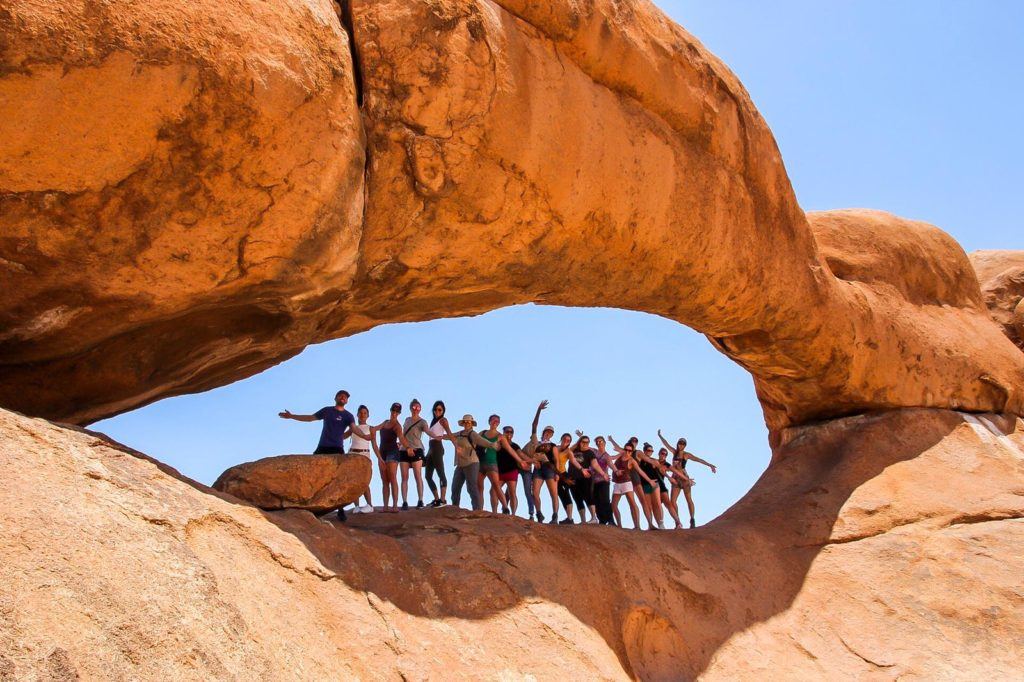
Other things to know:
- A shade umbrella might be helpful if you’d like to avoid the sun.
- Make sure you have plenty of water along.
- It’s mostly a gravel road for the 45-minute or so drive in, which can be dusty and bumpy.
Swakopmund + Walvis Bay

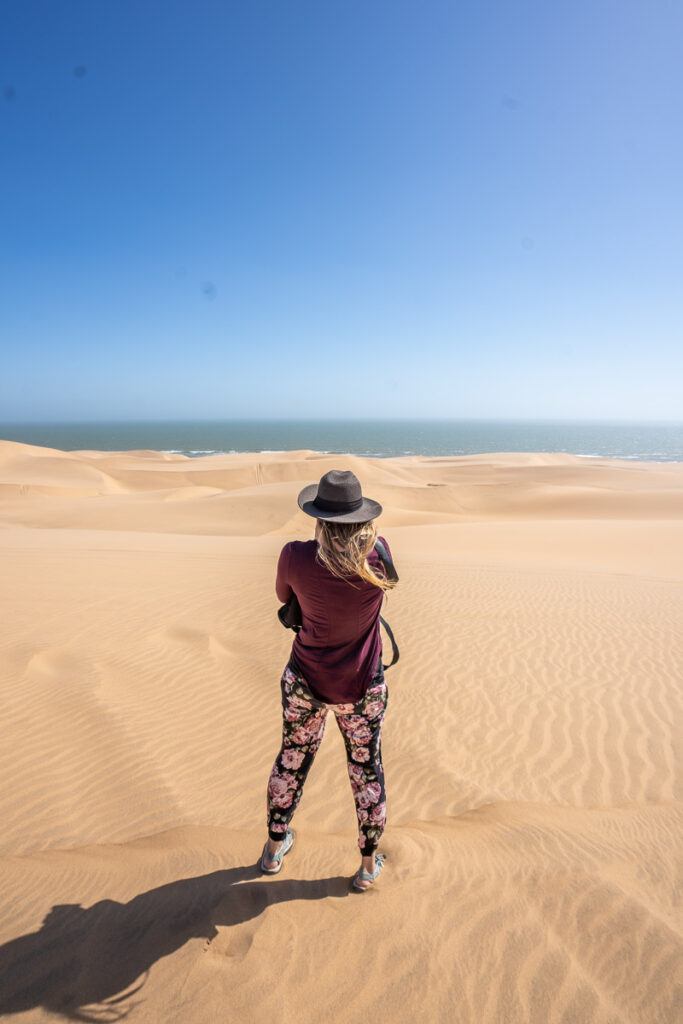
Namibia’s adventure capital, Swakopmund and Walvis Bay directly south of it offer a cooler coastal temperature that can, at times, be 20 degrees cooler than the rest of Namibia!
Whether you’re out on an ATV or exploring Sandwich Harbor, prepare for it to be a sandy day with gorgeous views, and not much shade cover, particularly for activities like quad biking, kayaking, and sand boarding.
A hat, sunglasses, light layers, shoes appropriate for the activity, and sunscreen are great to have on hand. If you’re doing Sandwich Harbor, consider medication if you get motion sickness.
Other things to know:
- A day might start foggy in Swakopmund, but it can burn off throughout the day, so always be prepared for sun.
- Make sure you have plenty of water along.
- WiFi might be better here. This is a great spot on the trip to get laundry done.
Sossusvlei
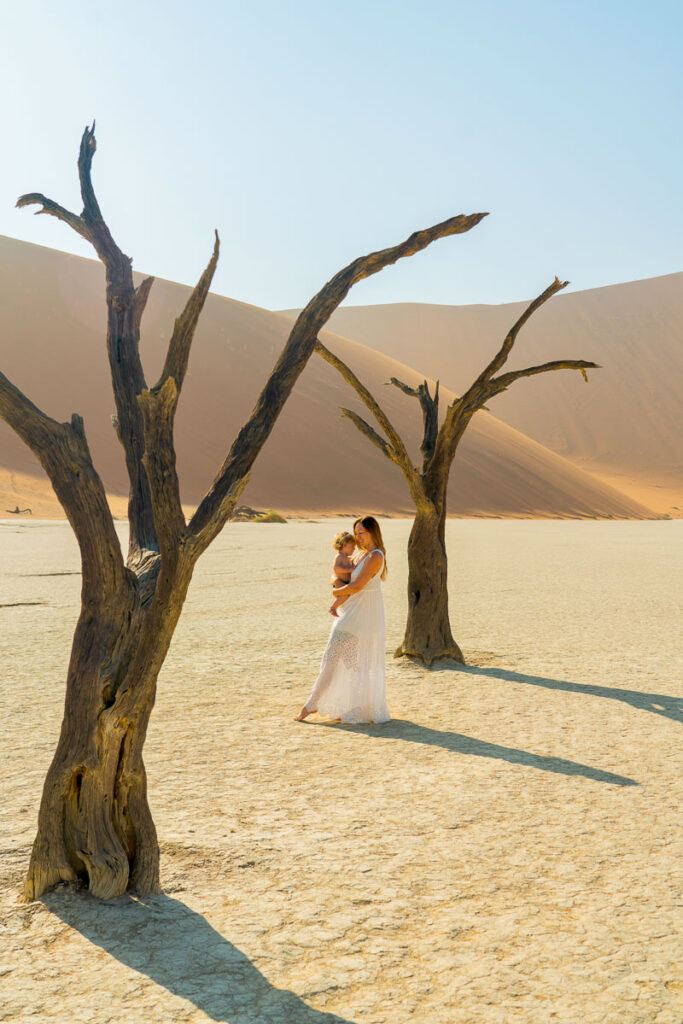
Sossusvlei and Deadvlei are what I’d consider the most unique part of the trip. You’re about to visit the oldest desert on earth, full of dark orange sand and the haunting acacia trees in the pan. It’s a photographer’s dream, and/or a great spot to hike some dunes.
The best light will be right when you arrive, so if you’re into photography, you may want to head straight to Deadvlei to take photos. I find the best contrast here is to wear white or black. If you want to be extra, consider hiking in with a dress (worth it!).
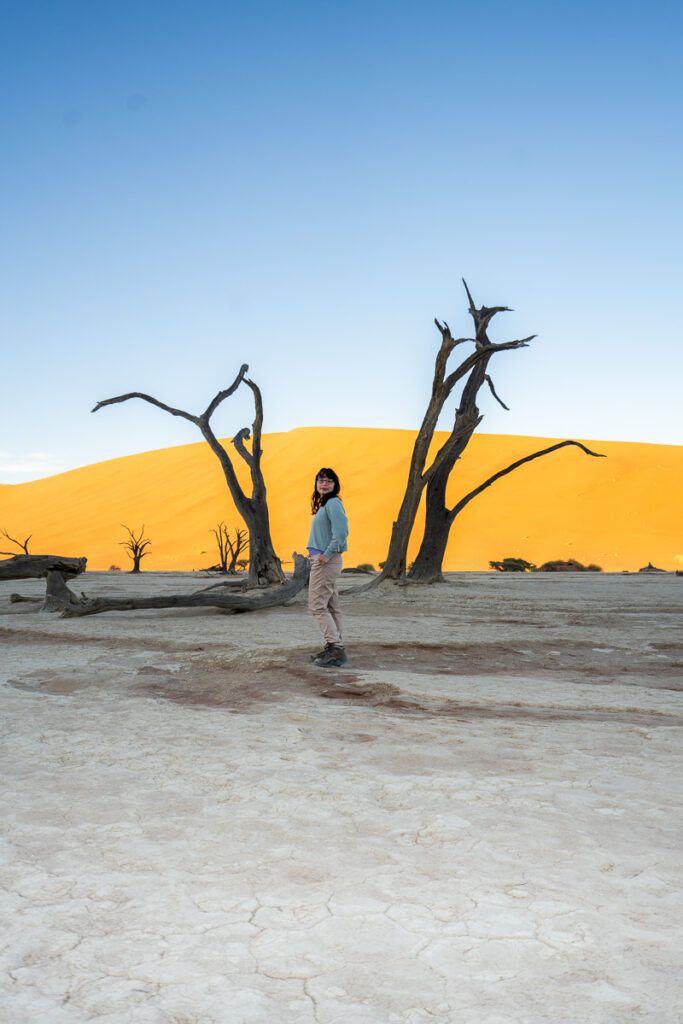
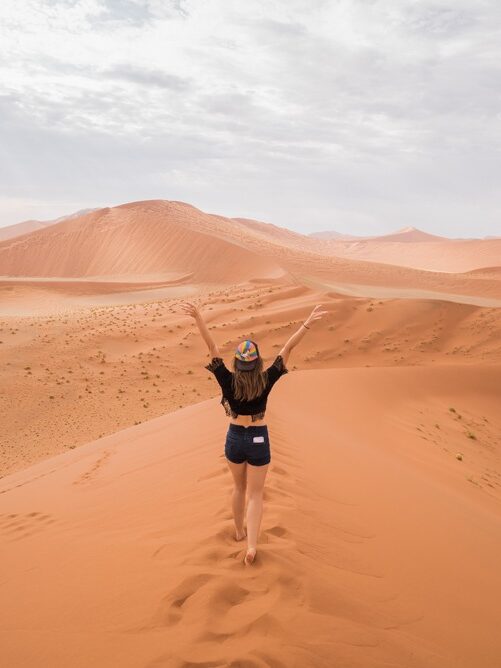
Or if you just feel like hiking, light layers, especially leggings if you’ll be climbing the dunes, are a great option.
Remember you’ll only want to bring what you feel like carrying around Sossusvlei, so pack a light backpack with some water, a breakfast pack, sunscreen, sunglasses, a hat, and some light layers.
The best footwear is chacos since boots take on too much sand. Once you get to the dunes, you can always walk barefoot or just with socks (but be alert for animals in the sand, like snakes and scorpions).
Other things to know:
- Once you arrive at Sossusvlei, you’ll be boarding vehicles that drive you through the sand to the start of the hike into Deadvlei. You can only bring along what you can carry as you can’t leave anything on these vehicles.
- Make sure you have plenty of water as there’s nowhere to refill.
- You can take a dress and still hike the dunes after. Just make sure the dress is easy to put into a backpack and pack some leggings or wear them underneath.
- Although the morning can be chilly, it can get very warm once the sun comes up.
Photography
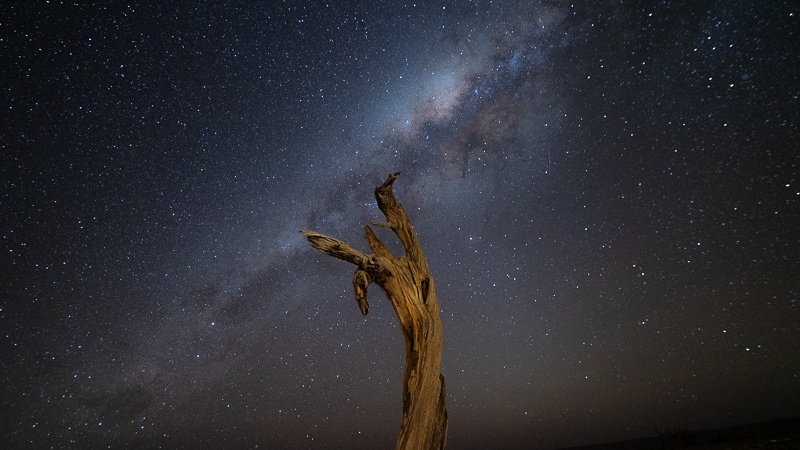
Namibia is a great place for astrophotography, and of course wildlife and landscape photography.
Bring a tripod, long-range telephoto lens (mine goes up to 600mm), wide lens for astrophotography, and something closer to the 35-100mm range for landscapes.
Final Thoughts
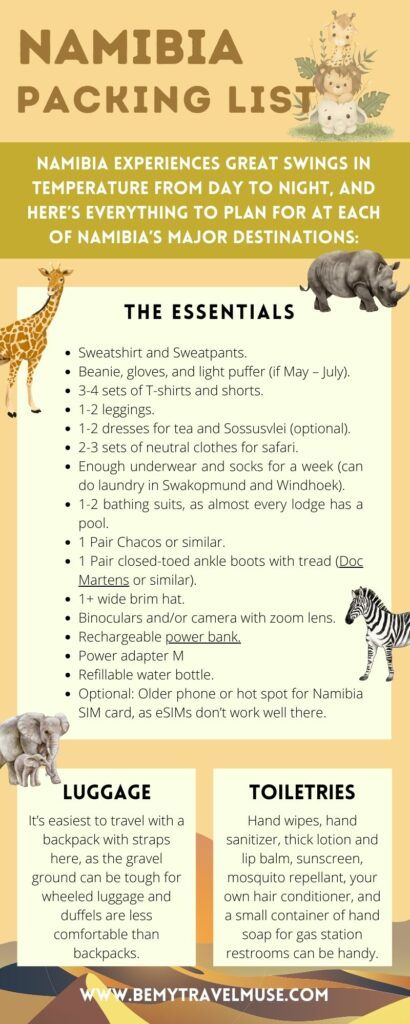
Namibia is a such a unique country to travel through. It’s the remoteness and the haunting landscapes and incredible animal life that make it so famous, though some of the same things that make it great can also make it challenging. Though the ruggedness makes it magical, it also means some of the roads are bad, and distances can be vast. Deserts are dry and often hot, and Namibia is no exception.
As long as you’re prepared and ready for an adventure, it’s one of the best places in the world to explore.
*Some links in this post are affiliate links that support us at no extra cost to you when you purchase through them. We only recommend products we love and use ourselves. Your trust always comes first!
Leave a Reply